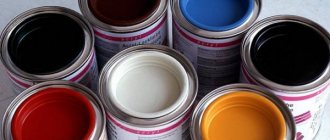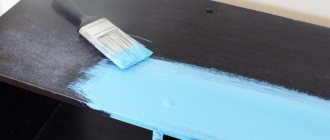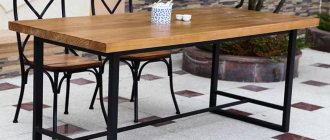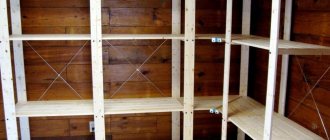To apply oil paint to a surface, sometimes it is necessary to obtain a more liquid consistency, so it becomes necessary to dilute the composition. This procedure will also be required in cases where the solution was left for some time in an unsealed container, which led to its hardening. To dilute the mixture, various substances are used, which are selected based on the purpose of the paint.
Linseed oil
Flaxseed oil is widely used for painting, as it has almost no odor and is completely safe for health. The paints mix well, maintaining brightness and thickness, and dry fairly quickly - in about a week, if there is no dampness in the room. Flaxseed oil is consumed more slowly than other thinners, making it an economical option. The disadvantage of this solvent is the absence of varnish in the composition - this gives a matte, without shine, surface of the paint layer after drying and less resistance to destruction over time.
Removing all types of paints
Removal products:
- Iodine solution. To do this, add 200 milliliters of iodine to a 10-liter container of water. Stir the solution well and apply it to the surface. After some time, cracks will appear.
- Soap solution. The recipe involves using regular laundry soap. Take a bar of soap, grate it, mix the resulting mass with water.
- A solution of ammonia. To make it you will need 250 milliliters of ammonia, 2 kilograms of chalk, and a liter of water. The solution turns out to be a porridge-like consistency. Apply the resulting mass to the surface. After a few hours, the old coating will begin to peel off.
- Dichloroethane and chloroform work well with latex coatings. Any of these components can be safely added to the solution.
- If the surface is painted with acrylic paints and varnish, you can add alcohol (vodka) or salicylic acid to it to improve the working qualities of the solution.
Artistic varnish
Artist's varnish gives paints bright colors, durability of layers and enamel shine. Works painted on varnish dry quickly, but the strokes lose their texture and take on a decorative appearance, so this method is usually used for painting miniatures. There are also special varnishes for glazing - they quickly fix a layer of paint, allowing you to apply another one on top of it. There are different types of varnishes: mastic, dammar, fir .
Criteria for choosing a solution for washing off old coating
To paint different objects, paints and varnishes on different bases are used:
- Water-based and water-dispersed dyes are water-based, so to wash them off you will definitely need quite a large amount of water;
- oil-based paints are dissolved with hydrocarbon solvents, in this case, to wash off, you will definitely need to contain alcohols, which will turn the solid substance into a semi-liquid state;
- nitro paints are dissolved only with solvents that contain acetone; as additional substances, the remover must contain an inhibitor (chemical reaction retardant), which will reduce the evaporation of the main solvent;
- polymer-based coatings can only be removed using strong alkalis or acids.
Each case requires a different type of solvent that will destroy the internal bonds in the layer of the old coating.
Important! It should be remembered that washes only destroy the layer. To completely remove it, additional mechanical removal will be required using spatulas, scrapers or other mechanical devices.
The presence of various properties of dyes requires in each case to be approached using a specific solution for removing paintwork.
Thinner "Double"
Thinner “Double” is based on linseed oil, but a small proportion of painting varnish (for example, cedar or fir) is added. This thinner makes the paint thicker, it mixes better, and the drying speed of the layers increases. Also, after final drying, a more durable paint layer is obtained that retains its picturesque qualities for a long time. Colors remain bright and deep, and the surface of brush strokes reflects light evenly, better preserving the characteristic shine of oil paint.
The best solvents
There are quite a lot of substances that can be used to dissolve oil-based solvents.
Turpentine
This substance is often used to dilute oil paints. For this, the following types of composition are used:
- Woody - made from bark and branches, which contain a lot of resin. Initially, a dark solution is obtained, but after processing it becomes transparent.
- Turpentine - obtained by distilling the resins of coniferous trees. Essentially, it is an essential oil. This substance has many positive properties. Therefore, it is used not only as a solvent.
The benefits of turpentine include the following:
- natural composition;
- reducing the drying period of paints;
- variety of types of means.
The substance also has disadvantages:
- specific smell;
- the need to work in a well-ventilated area.
White Spirit
This is a fairly popular product that is convenient to use. It doesn't evaporate too quickly, which helps you paint slowly.
See also
Comparative table of wall paints, what types of top 11 compositions there are
The advantages of the composition include the following:
- ease of use;
- slow evaporation;
- no effect on the shade of the composition;
- reducing dye consumption;
- affordable price.
However, this product also has disadvantages:
- the presence of a specific odor in some substances;
- the need for strict adherence to technology.
Special thinner 647
This product is very popular and is often used for diluting oil dyes. Its advantages include the following:
- the possibility of bringing the dye to the ground solution;
- use as a degreaser;
- affordable price.
At the same time, the substance also has many disadvantages:
- unpleasant odor;
- easy flammability;
- increased absorption of paints by the coating;
- the need for thorough mixing when combining with dye.
Gasoline and kerosene
These products are used exclusively in extreme situations, if there are no other types of solvents.
Such substances are considered very volatile. In addition, they evaporate easily at room temperature.
The advantages of the compositions include the following:
- the possibility of using old thick dyes - it is best to use kerosene for this;
- the possibility of obtaining a matte finish - this effect is provided by gasoline.
However, the substances have many disadvantages:
- toxic effects on the human body - vapors of substances provoke poisoning, which is accompanied by headaches, dizziness, nausea and other manifestations;
- flammability;
- explosion hazard.
Drying oil
This means for diluting oil dyes is considered universal. It is initially present in them as a pigment diluent.
There are many types of drying oil that need to be taken into account when making working fluid.
The advantages of the composition include:
- ease of use;
- formation of a thin film on a painted surface;
- variety of types of material.
However, the substance also has disadvantages:
- an increase in the drying time of the layer - observed when there is an excessive amount of drying oil in the paint composition;
- the need to use the same type of drying oil that is present in the paint.
Linseed oil
This substance is actively used in painting. It is practically odorless and completely harmless to health. The dyes mix easily and retain rich shades.
At the same time, flaxseed oil has the following advantages:
- ease of mixing with paint;
- no pungent odor;
- health safety;
- preservation of rich shades of dyes;
- short drying period;
- economical consumption.
See also
What is the difference between zinc and titanium white, which one is better to choose?
However, the composition also has disadvantages:
- lack of varnish in the composition;
- obtaining a matte surface after painting;
- low resistance to destruction.
Artistic varnish
This substance gives dyes rich shades, makes layers more durable and shiny. The advantages of artistic varnish include the following:
- the ability to preserve rich colors;
- giving the coating an enamel shine;
- short drying period;
- high strength of layers;
- variety of types of such substances.
At the same time, the funds also have some disadvantages:
- loss of texture of strokes after processing;
- the need to comply with application technology.
Thinner double
This substance is based on linseed oil. However, a little artistic varnish is added to it - it can be a cedar or fir substance. This component helps make the paint thicker and easier to mix. At the same time, the composition increases the rate of drying of the layers.
The advantages of using this type of thinner include the following:
- ease of mixing with paint;
- increasing the drying rate of layers;
- possibility of obtaining a paint layer;
- creating rich and deep shades.
The disadvantages of the thinner include:
- the need for strict adherence to proportions;
- high price.
Pinen
This substance is made on the basis of turpentine. However, it has a transparent texture and is odorless. Therefore, the composition does not provoke yellowing of dyes. Pinene helps to thin paints efficiently. It makes mixing substances easier.
The advantages of the composition include the following:
- transparent consistency;
- high drying speed;
- high-quality mixing of paints.
At the same time, pinene also has disadvantages:
- giving the surface a matte texture;
- the result is not durable enough.
Thinner No. 3
This product is made on the basis of 3 components. It includes varnish, oil, thinner. At the same time, the oil helps make the strokes thicker and ensures even mixing of the components. The thinner helps the layers dry faster, and the varnish makes the paint stronger.
The benefits of the substance include the following:
- uniform mixing of components;
- increasing the drying speed of dye layers;
- durable coating;
- maintaining shine and richness of shades.
However, the composition also has disadvantages:
- the need to comply with technology;
- high price.
See also
What paints need to be mixed to get yellow and its shades
Solvent
This is a petroleum product that differs in its hydrocarbon composition. Since the composition is obtained by evaporating oil at low temperatures, it is considered to be quite light and has a short evaporation time.
The advantages of the composition include the following:
- light composition;
- high evaporation rate;
- possibility of obtaining a shiny surface.
At the same time, the composition also has a disadvantage:
- high price.
White Spirit
White spirit is a common solvent for a wide variety of paints; it can be found not only in art, but also in any hardware store. White spirit is also great for washing brushes and palettes, removing dried paint, and degreasing canvas. It effectively dilutes the paint and evaporates quickly, the paint layer is thin and dries quickly, but at the same time, white spirit affects oil paints, disrupting their composition and binding qualities. Therefore, the disadvantage of this solvent is the fragility of the resulting paint layer and the dullness of the surface. In addition, white spirit can have a pungent odor, which causes discomfort during long-term use.
A great option is Lakka Bensini from Tikkurila. Affordable and with minimal odor.
Dilution procedure
No less important is the process of diluting the paint yourself, because its accurate implementation is the key to the absence of further problems.
Activities are carried out in the following order:
- The container of paint is opened, the thickness is assessed and thorough mixing is performed. To do this, use a handy tool or a prepared clean stick.
- The required proportion is determined. For each solvent, the indicator may be different. The exact amount of the substance depends on the thickness of the paint, but should not exceed 5% of the total mass. Although, if necessary, obtain a mixture for the base layer or primer of walls, the volume of white spirit and drying oil can reach up to 10%. To dilute the mixture in the best possible way, the thinner is added directly to the jar. It should be poured in gradually in small portions. This will allow you to restore the composition and mix it well.
- Next, the paint is poured into containers for use. During the painting process, the material may thicken, so you need to periodically mix the solvent.
It is more difficult to thin paint that has been left open for a while. Work order:
- The film that has formed on the surface due to exposure to oxygen is carefully removed. You cannot leave it or mix it, otherwise it will be impossible to completely get rid of hard lumps.
- A small amount of kerosene mixed with white spirit is poured into the container, everything is mixed well. If required, more thinner is added.
- Then you can paint with this mixture or wait until the kerosene evaporates and use only one component for dilution.
Important! The work is carried out in compliance with increased precautions, since oil paint and all substances used for dilution are flammable and toxic.
Pinen
This thinner is made on the basis of turpentine, but unlike it, it is transparent, odorless and does not cause yellowing of paints. Pinene dilutes paints very well, it is convenient to mix colors on it, the paint layer is transparent, of slight thickness and dries quickly, allowing you to apply new strokes on top without the danger of mixing. This is very convenient if the picture must be painted in a limited time, but if you use only pinene when working, the paint surface will become dull when dry and will not be durable enough.
How to thin dried oil paint
To properly dilute the composition, you should study the manufacturer’s recommendations written on the packaging. They strictly monitor compliance with proportions so as not to compromise the quality of the product and not lose all the positive properties and color effect.
When working at home, ventilation is required; all formulations contain chemical components that can be harmful to health if inhaled.
Also make sure that the product does not get on the skin; if this happens, immediately wash the area with cold water. It's better to wear gloves.
Having introduced the required amount of the dissolving element, intensive stirring is performed until a homogeneous consistency is obtained. Solvents can also be used to obtain a primer mixture.
Having introduced the required amount of the dissolving element, intensive stirring is performed until a homogeneous consistency is obtained.
Thinner "Tee"
Contains a combination of three components - oil, varnish and thinner. Oil gives brush strokes a thick consistency and helps the paint mix evenly, thinner (most often pinene) increases the speed of drying of paint layers and the finished work, varnish promotes the strength of paints and helps maintain the shine and richness of colors. Of all the thinners, “Tee” is used most often and is perhaps the best choice for effective and quick work with oil paints.
What solvent is needed for oil paints?
Oil paints can be used for different purposes and materials: wood (for example, for wooden floors), metal, canvases and others. They can be used for both interior and exterior work. Why is dilution required? There are different options, mainly for restoring the old solidified product and also to get a more liquid version that will look different in the paintings and make it easier to apply.
Today, two types of oil paint thinners can be distinguished: petroleum distillates or petroleum refining by-products. They are used to dilute compositions of dyes used for finishing construction work.
From these products various types of thinners are obtained, which can be used to dilute coloring agents. More information about common types will be discussed below.
Oil paints can be used for different purposes and materials: wood (for example, for wooden floors), metal, canvases and others.
Selecting a washing method
If you want to change the paint on any metal object, you need to be patient. The first step is to remove the paint layer.
- Manufacturers are striving to improve their paint and varnish products.
- When repainting metal, this can become a serious problem: it is impossible to manually remove the old layer of paint due to its resistance to external factors.
- Therefore, you need to prepare before starting work: stock up on the appropriate equipment, find time, space, etc.
To remove the paint layer, there are 3 methods. Each of them is used in different conditions and depends on how many layers of paint are applied, how much money is allocated for this process, the type of paint, the availability of the required tools, etc.
Before you start washing off the paint, you should familiarize yourself with the following methods and choose the most optimal one.
Removers for powder paints
Powder paints are applied by spraying. Then the sprayed layer is melted. The result is a monolithic coating with a molten paint layer. It has no shells. When applied correctly, the coating can withstand the harmful effects of rain, cold, sunlight and other atmospheric influences.
It’s quite difficult to just soak powder paint. Epoxy and polyester resins are used as binders. Plasticizers are added to impart elasticity.
To remove powder paints, it produces a special composition (Fig. 9) “Antikras-P” (in addition to the remover for powder paints, the universal remover “Antikras” and the facade paint remover “Antikras-Fasad” are produced).
To use such a solution, it is applied with a brush. Small products are completely dipped into a container with the working mixture. It is also recommended to wet a rag and then apply it to the areas from which paint needs to be removed.
Rice. 9 Antikras-P
Attention! When using powder paints, a new coating can be applied over the old one. You just need to monitor the presence of a structure former in the paints. If it is present in the old or new coating, then the shagreen effect will certainly appear at the moment the powder paint melts in the oven.
Mechanical method
This method is the most difficult. It takes a lot of physical strength to remove paint mechanically. But this method does not require as much money as the other 2 methods require. In this way, paint was removed from metal in those days when special compounds had not yet been invented.
Necessary items: sandpaper and any power tool. You can also use a sharp knife.
The process of removing the previous paint layer involves manually picking it out. Then the remaining debris should be washed off with water.
What are the disadvantages of the mechanical method?
- This is extremely hard physical work. The larger the surface to be treated, the more time and effort you will have to spend.
- There is a risk of damaging the surface.
- After finishing work, everything around will be covered in dust, which can negatively affect your health.
- The method does not work for many types of paint.
Despite the severity, people still wash off paint in this way, regardless of the size of the surface being treated.
How to remove plaque from brass
To renew the appearance of small brass items, you need to use a detergent. To do this, place the item in a pan with water and detergent and leave to boil for several hours. Then pull out the product and use a nylon brush to remove the paint. After this, to protect it from rust, you need to wipe the product with a rag with wax.
Next, the metal is primed and becomes available for applying a new paint layer.











